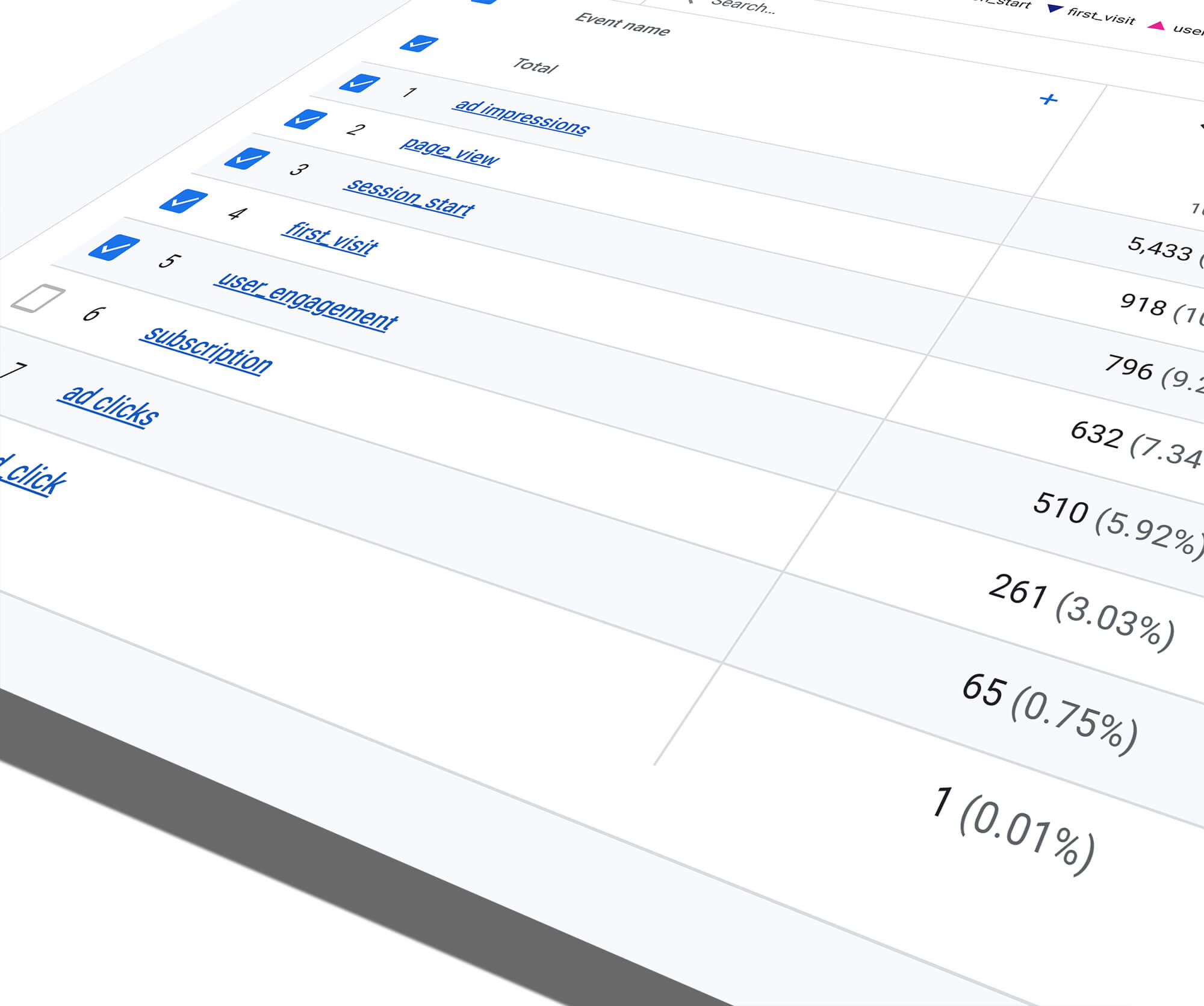For us publishers, an ad impression is far more than just a counting metric. It forms the very foundation for website monetization, essential for evaluating our ad inventory, boosting our attractiveness to advertisers, and, indeed, sharpening our entire strategy. As a publisher, if you truly grasp the intricate mechanisms behind an ad impression, you can deliberately nudge your revenue lever and achieve truly sustainable success.
An ad impression (or simply, "impression") refers to the digital sighting of an advertisement on a webpage. Technically, one can count an impression the moment an ad server registers the loading of an ad on a page, usually via an invisible tracking pixel or a corresponding script.

Crucially, an ad impression merely signifies that an ad has been technically delivered, not that the user actually perceived it. And oh, how we wish it were always so simple!
| Criterion | Ad Impression | Ad Click | Ad Reach |
|---|---|---|---|
| Definition | Sighting of the ad | User interaction | Number of unique users |
| Significance | Visibility | Engagement | Breadth of audience addressed |
While clicks measure active user behavior, reach represents the number of unique users exposed, and the ad impression stands for the pure, unadulterated visibility of the ad.
Not every ad impression holds the same value. For us publishers, certain types are particularly relevant:
| Type | Definition and Relevance |
|---|---|
| Served impression | Counts every ad delivered, regardless of visibility. The inherent problem: ads "below the fold" are often never actually seen. |
| Viewable impression | According to IAB/MRC standards, at least 50% of the ad must be visible on the user's screen for at least 1 second. Experts consider this the gold standard, as it truly measures actual visibility. |
| Verified, clickable, engagement impression | Further distinctions, such as verification (e.g., by third parties), interaction possibilities, or actual user actions. |
Viewability is particularly crucial for publishers, as it directly impacts our compensation and the overall attractiveness of our ad placements. It’s the metric that truly makes our efforts count.
The compensation for many publishers operates under the Cost per Mille (CPM) model, meaning per 1,000 ad impressions. The sheer number and, more importantly, the quality of these impressions directly determine our revenue. If we analyze our ad inventory diligently, we quickly discern which placements and formats generate the most valuable impressions.
Transparency and a high viewability score also significantly boost our appeal to advertisers and improve the overall performance of our ads. It’s a delicate dance, but a necessary one.
| Connection | Significance for Publishers |
|---|---|
| Impression & Revenue | More (high-quality) ad impressions directly lead to higher earnings in the CPM model. Simple, yet powerful. |
| Impression & CTR | Many ad impressions with a low click-through rate (CTR) indicate a clear need for optimization in placement or creative design. A sign to act! |
Maximizing viewability is absolutely central. Technical measures, such as fast loading times and a responsive design, ensure that ads are actually visible. Placing ads "above the fold" (in the immediately visible area) significantly increases the chance of counting viewable impressions. Simultaneously, protecting ourselves from impression fraud is paramount: invalid or artificially generated impressions harm the quality of our inventory and can lead to heartbreaking revenue losses.
Another critical topic, dear colleagues, is ad frequency—how often a user sees an ad. An excessive frequency can annoy users and, quite ironically, reduce the effectiveness of our precious impressions.
| Metric | Significance and Optimization |
|---|---|
| eCPM | (Effective Cost per Mille) The true revenue per 1,000 ad impressions. This metric climbs with improved viewability and premium placements. |
| CTR | (Click-Through Rate) The ratio of clicks to ad impressions. A low CTR, despite a high number of impressions, screams for optimization measures. |
A central, often exasperating problem with using an ad impression as a metric is the frequent disparity between what publishers and advertisers actually believe is being counted. While advertisers typically value truly visible and perceived impressions, we, as publishers, technically record every ad delivered, regardless of whether the user truly saw it. This persistent discrepancy frequently leads to debates about the reliability of the numbers and can cause painful misunderstandings during campaign evaluation.
Furthermore, high rates of ad blocker usage mean that a significant portion of our precious traffic simply doesn't even enter the impression count. Even with consistently high visitor numbers, the reported ad impressions can therefore stagnate or fall significantly below expectations.
For us publishers, this means: the pure traffic figure is no longer a reliable indicator of a website's monetization potential. You must always consider it within the broader context of current technical and regulatory developments. It’s a bitter pill to swallow, sometimes.
An ad impression is neither a panacea nor the ultimate metric for publishers, but simply one of several measures to evaluate a website's monetary performance and potential. It offers an important, yet inherently limited, glimpse into actual ad performance. Varying definitions—such as whether an ad was merely loaded or actually visible—often make comparisons frustratingly difficult. What is clear: only those ad impressions that users can truly perceive should be counted.
Ad impressions reveal tendencies and help us contextualize developments, but they certainly don't replace the deeper analysis of other crucial metrics, such as click-through rate, eCPM, or reach. Suppose you understand the strengths and weaknesses of this metric. In that case, you can effectively use it within the larger picture, as part of an honest inventory assessment, but never as the sole benchmark for success. It’s a journey of continuous learning, isn’t it?